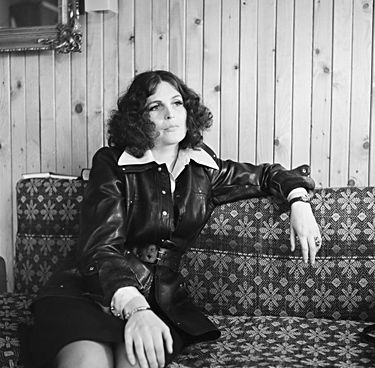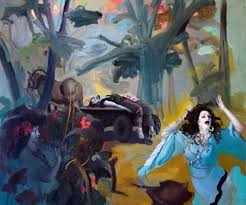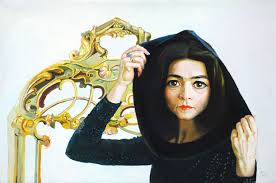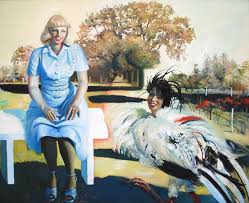
1939
Maija Nora Tabaka

description
An outstanding Latvian artist – painter and graphic artist, master of book illustration.
After graduating from the graphic and painting department of the Latvian Academy of Arts, Maya Tabaka as an aspiring Soviet artist had a rare opportunity to have a two-year internship in West Germany. The time she spent among the artists of the Berlin New Fine Arts association allowed Tabaka’s extraordinary talent to feel the “wind under the wings”. German art experts continue to call the artist “a bird of paradise” till this day – the impression she made with spectacular plots and brilliant painting was great. German galleries hold portraits of Maija Tabaka by Dieter Masuhr and Wolf Vostell. The latter is often reproduced – this is a close-up of a face with spots of paint on it and a camera instead of a nose.
The artist was also famous in her motherland – she became a member of the Union of Artists and People’s Artist of the USSR, was awarded prizes and awards (medal “Three Stars”, etc.), as well as the title of Honorary Citizen of Jurmala. Documentary films about the famous artist were also made.
Paintings of Maija Tabaka are not only at the major museums, galleries and private collections of Latvia, but also at the State Tretyakov Gallery and in several collections of Germany. The artist keeps on participating in collective exhibitions. Her personal and retrospective exhibitions took place in many cities throughout Europe and in dozens of cities in America, enjoying success over more than half a century of her creative career.
Key ideas:
– Almost from the beginning of her creative career, Maija Tabaka was indifferent towards the tendencies of the internal “Soviet” art with its painting rules and the “required” theme. She searched for her way, which turned out to be quite ambitious in terms of the choice of plots and in terms of the forms of expression.
– Participating in the program of the academic exchange under the auspices of the Berlin new fine art, she also did not follow the path of Realism characteristic of its representatives, turning to the flows of her inner vision. At the same time, she did not reject the real nature – on the contrary, she painted realistic landscapes, weaving the intense conflicts of modern society into them.
– A speciality of the artist’s painting was a bold and, according to the opinion of academic art, an inharmonious combination of pastoral and modern motifs in one picture. In terms of composition, she preferred two- and three-part constructions, separating one canvas to express different similar or associatively interconnected plots.
– The secret of the artist’s long and lasting popularity at home and abroad is in the complex spatial structure of most of her paintings, in the multi-layered nature of the visualized stories and the unexpected perspective of the plot presentation.
– In any case, it is obvious that the demand for art by Maija Tabaka does not have anything in common with the therm «mass culture», but rather is connected with the originality and special ability to discover a miracle by the picturesque canvas.
1939
1957
1961
1964
1973
1977
1979
1981
1983
1989
1994
2000
2004
2008
The birth of the artist
Entered the department of graphics of the Latvian Academy of Arts

“Portrait of a Group of Young Artists”

The works of the artist were presented at the All-Union Collective Exhibition

“20 Realists from the Soviet Union”

She was a scholarship holder at the German Academy of Fine Arts

The first solo exhibition

“For Peace and Disarmament”

Tabaka's works were shown at the Central House of Artists in Moscow

The artist’s paintings were exhibited at Eduard Nakhamkin’s Fine Art Gallery in New York

Maija held two solo exhibitions

The artist was awarded the Order of the Republic of Latvia

The artist was awarded the title of honorary citizen of the city of Jurmala

Maija was awarded the Prize of the Ministry of Culture of the Republic of Latvia

